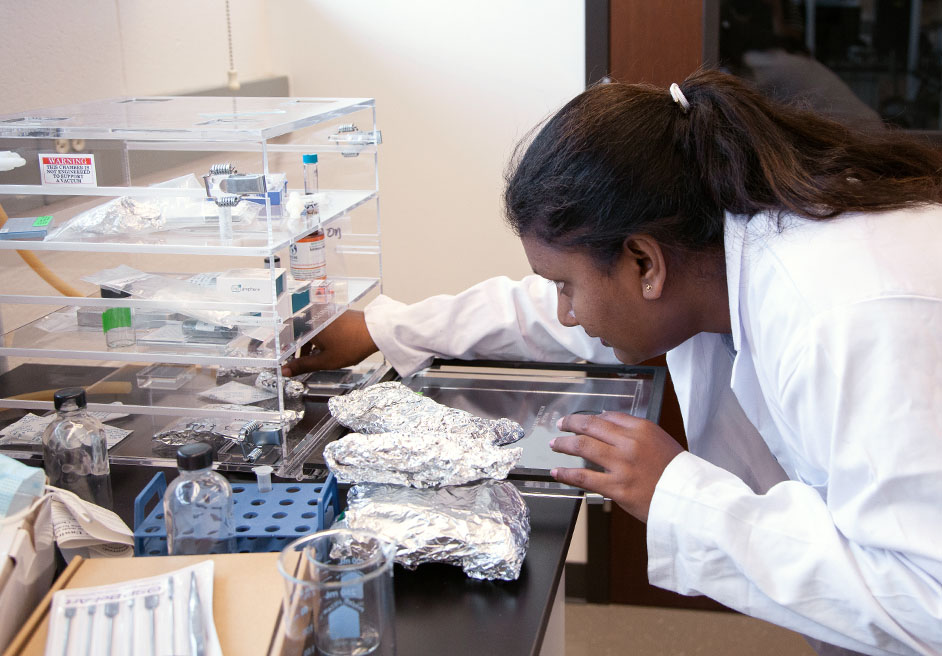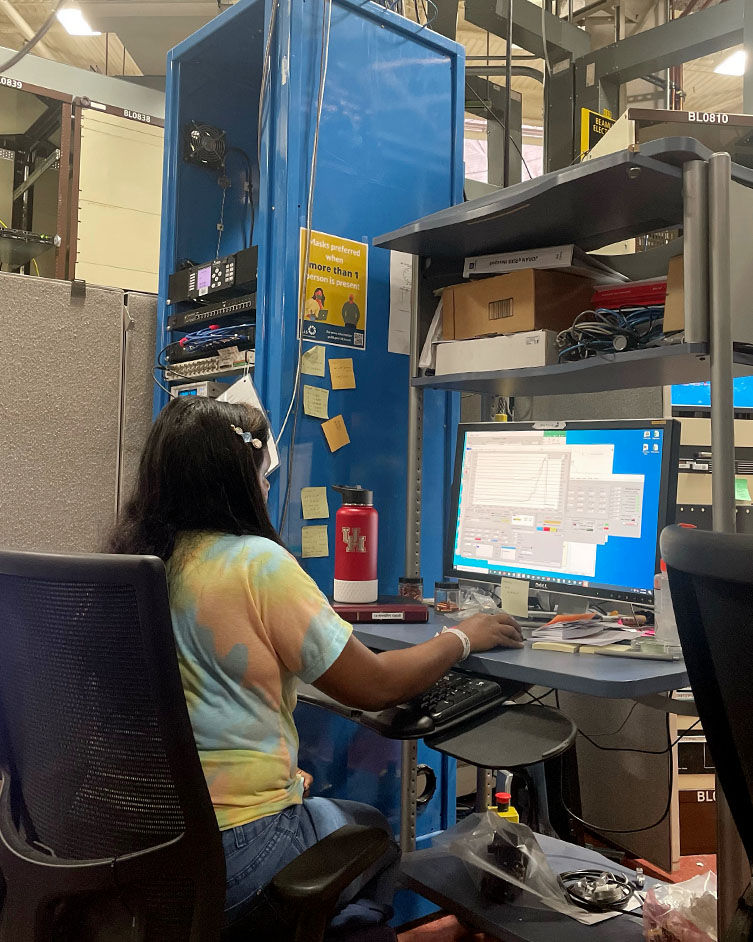Physics Ph.D. Student Awarded Fellowship at Berkeley Lab
Chamini Pathiraja Receives Advanced Light Source Doctoral Fellowship
Since her childhood, Chamini Pathiraja excelled in mathematics. Her interest and natural ability for the subject continued through her undergraduate studies in college, as she specialized in math, physics and management in her home country of Sri Lanka.

However, toward the end of her undergrad studies she leaned toward a career in physics because of its application and experimental nature, as opposed to theoretical mathematical studies.
Her dedication paid off as she won the gold medal at her university for the best overall performance in physics.
Pathiraja, now a third-year physics Ph.D. student at the University of Houston, was awarded an Advanced Light Source Doctoral Fellowship by the Lawrence Berkeley National Laboratory for her excellent research performance. This entails a yearlong research opportunity at the Advanced Light Source user facility where she will receive scientific training and professional experience. She started working there on April 1, 2022.
“As a graduate student, getting to do a fellowship like this at a government facility is extremely beneficial for my job prospects,” Pathiraja said. “I’m an international student; this is a once-in-a-lifetime opportunity for me.”
The Advanced Light Source fellowships give student researchers the chance to work on synchrotron radiation research, that is, radiation research at particle accelerators, and the opportunity to advance techniques and applications.

At the laboratory, Pathiraja works with Yi-De Chuang, staff scientist of the Resonant Inelastic X-Ray Scattering (RIXS) experiment at the Advanced Light Source facility, who specializes in photon science operations.
He is a collaborator with Byron Freelon, Pathiraja’s advisor and assistant professor of physics at UH’s College of Natural Sciences and Mathematics.
“Dr. Freelon is the best advisor I have ever had,” she said. “He guides me through
every step of my research. He’s the one who told me to apply for this fellowship in
the first place.”
Freelon is proud of Pathiraja for receiving the opportunity.
“Chamini is a good student with great potential,” he said. “She is dedicated to her research project and finds new ideas every day. I believe she will excel in this fellowship.”
Making Strides in Materials Research
Parthiraja is working on the RIXS experiment at the Advanced Light Source facility. She is using RIXS as a technique to investigate the electronic structure and magnetic structure of materials. RIXS works by essentially measuring the change in both energy and momentum of photons scattered from material samples.
“We’re currently working on the van der Waals 2D materials, chromium trihalides,” she said. “These are chromium chloride, chromium bromide and chromium iodide.”
The materials have been studied for decades because they show interesting electronic and optical properties. Recently, the discovery of their magnetism has inspired more devoted study, due to their promise to revolutionize the field of spin-based electronics. It has potential advantages over conventional semiconductors because it could increase data processing speed and decrease electric power consumption.
However, a full picture of chromium trihalides’ electronic and magnetic energy has yet to be fundamentally understood.
At the Advanced Lightsource laboratory, she will deploy x-ray beamlines to investigate electronic excitations in chromium trihalides. Accelerated x-rays will hit the samples, and the synchrotron’s detector will allow her to collect data from them.
The laboratory also provides a high throughput spectrometer to enable efficient measurements of thin samples.
“Armed with this information, I plan to continue my chromium trihalides studies using higher resolution beamlines available at synchrotrons around the world,” she wrote in her fellowship proposal.
- Rebeca Trejo, College of Natural Sciences and Mathematics
May 10, 2022